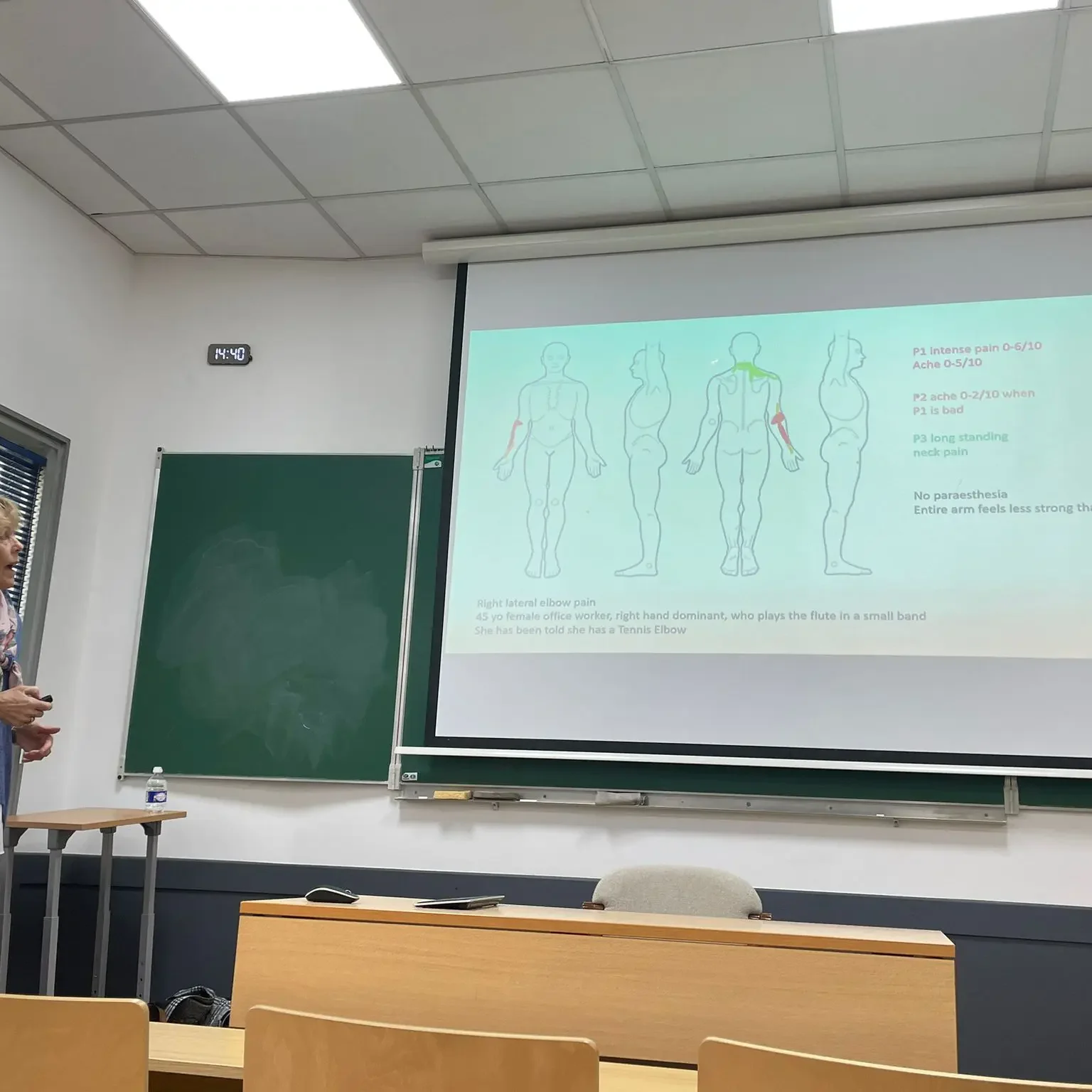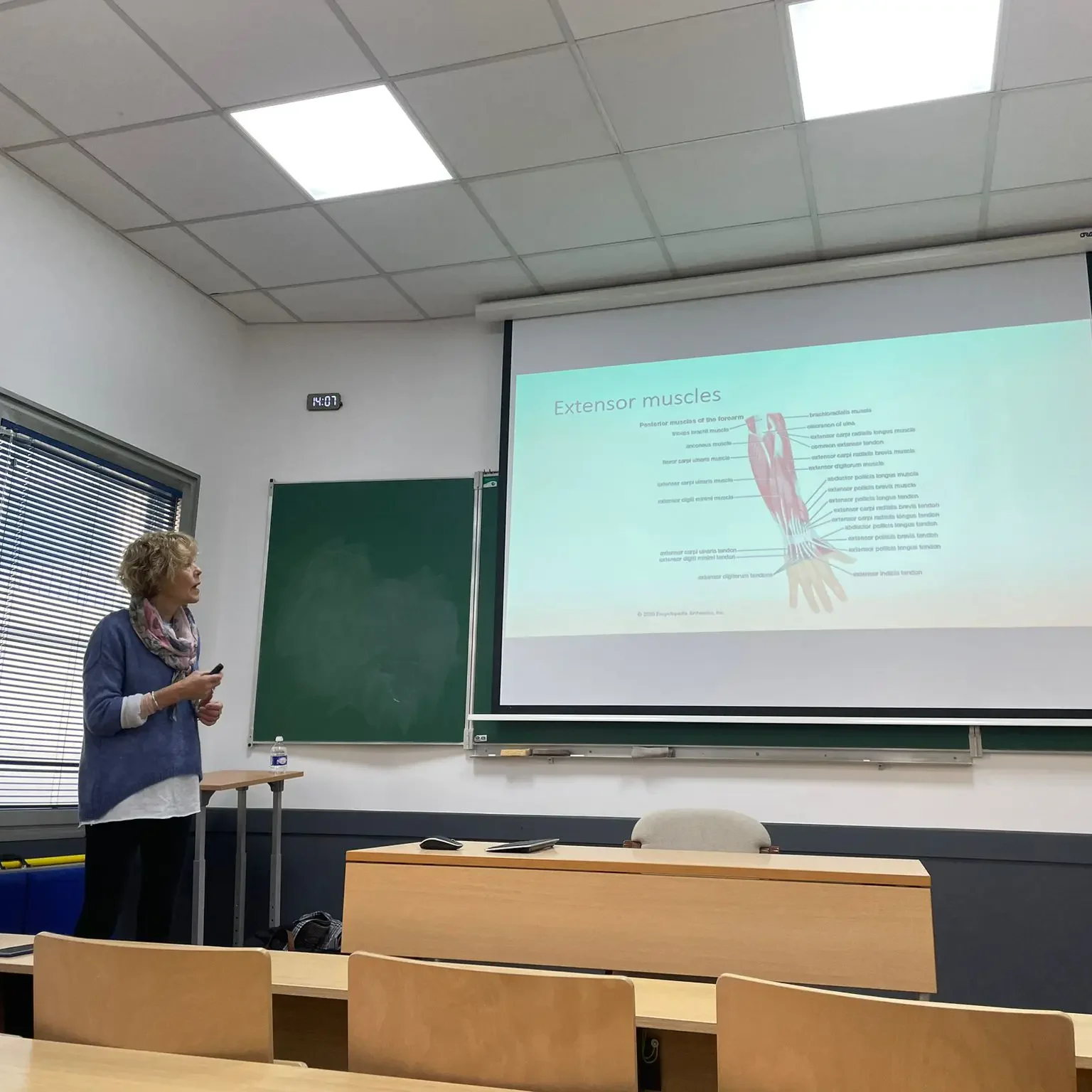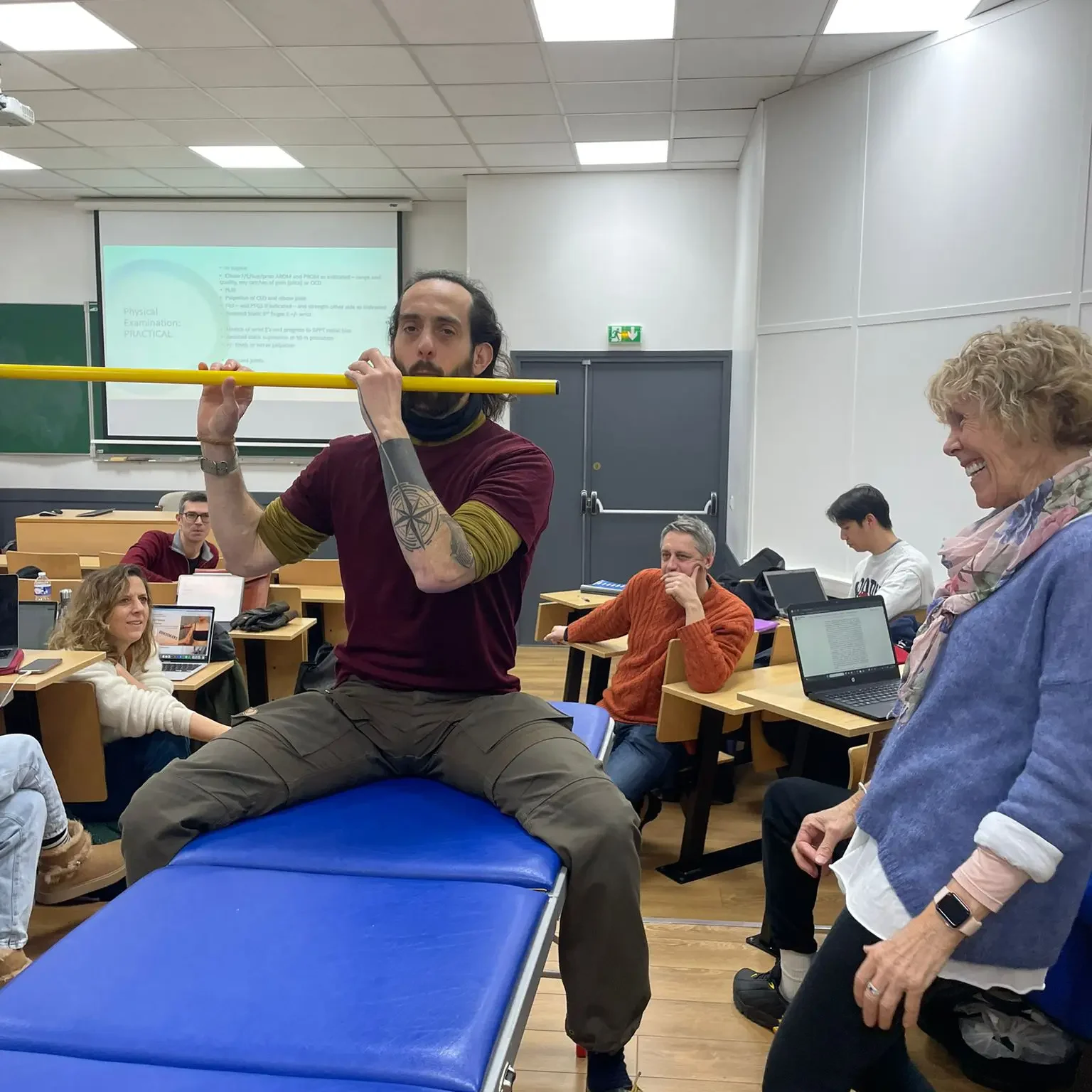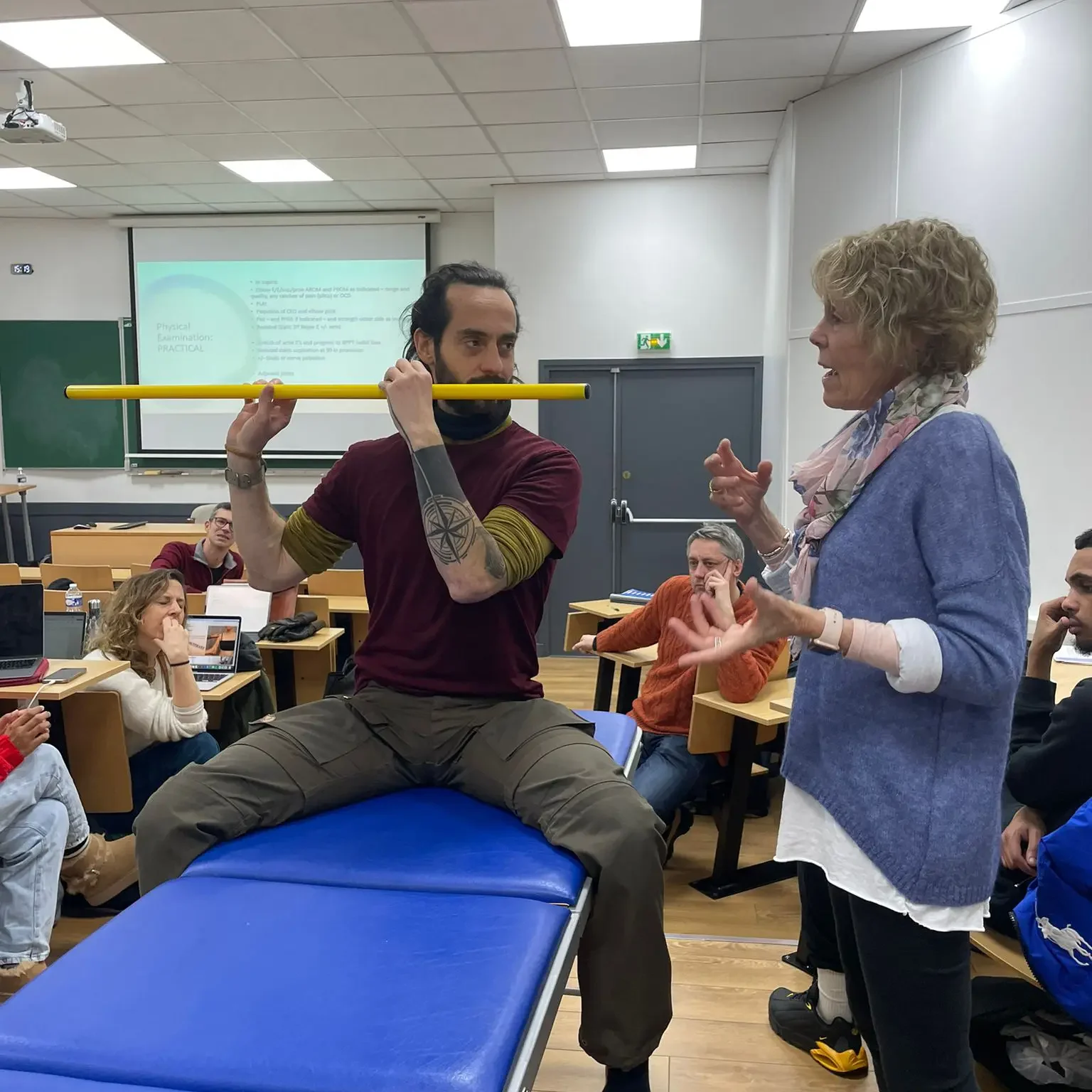Dr. Erica Williams, an Australian physiotherapist, recently engaged with our third-year students
In continuation of the Australian Week in November 2023, the International Office of CEERRF, along with our teacher Céleste Rousseau, organized captivating sessions last week for third-year students featuring Dr. Erica Williams, a physiotherapist specializing in musculoskeletal disorders. Recognized by the Australian College of Physiotherapists in 2008, she shared her expertise with our students.
Voir cette publication sur Instagram
Dr. Williams boasts extensive experience in managing musculoskeletal conditions and currently works in both the public and private sectors. She has played key roles as a research assistant, treating physiotherapist in various research projects, and has been actively contributing to postgraduate clinical education for many years. Additionally, she serves as a guest lecturer in the Master’s program in Musculoskeletal Physiotherapy at the University of Queensland. Driven by a passion for career development pathways and the recognition of clinical physiotherapists, Dr. Williams shared her experiences and insights.
The year started with an Australian focus. Our third-year students benefited from stimulating and interactive classes delivered in English to foster proactive preparation for the future and different approaches to Australian musculoskeletal physiotherapy. The topics covered included:
- Relevance of a clinical reasoning framework using lateral elbow tendinopathy as a model
- Analysis of obstacles to expanding the scope of practice in France and Australia
- Importance of a clinical reasoning framework
- Lateral elbow tendinopathy as a model to demonstrate the application of evidence-based practices at the individual patient level
- Basic anatomy
- Different tendon stresses and presentations
- Central and peripheral awareness
- Concurrent conditions
- Critical evaluation of relevant research literature
- Understanding the limitations of research findings when applied to individual clinical practice
- Aim for improved clinical outcomes through evidence-based practice, with the ability to extrapolate this to other musculoskeletal conditions
- Case study
- Practical examination of the elbow joint and treatment techniques
As an institution committed to providing reflective and globally open education, CEERRF continues to offer exceptional opportunities for its students to acquire international knowledge and prepare for diverse approaches in the field of musculoskeletal physiotherapy. We take pride in offering a dynamic educational environment that shapes the physiotherapy professionals of tomorrow.
Discover the testimony of our International Ambassador Camille, a third-year student.
Testimony on the participation of one of our physiotherapy students in a course conducted by Dr. Erica Williams
The course focused on tendinopathies, with a particular emphasis on lateral epicondylitis. It provided an in-depth understanding of this commonly encountered pathology in physiotherapy, highlighting risk factors, diagnostic methods, and personalized treatment approaches in physiotherapy. Ms. Williams supported her explanations with anatomical and biomechanical details.
The anatomical aspect of the course deepened understanding of the structures involved in lateral epicondylitis, emphasizing muscles, tendons, ligaments, and nerves in the elbow region, while highlighting the importance of distinguishing different types of pain (nociceptive, nociplastic, etc.). Biomechanical explanations enabled students to grasp the underlying mechanisms of the pathology, particularly focusing on repetitive movements and excessive stresses, especially in novice athletes.
The course’s approach was interactive, incorporating clinical cases illustrating various patient scenarios with symptoms of lateral epicondylitis or highlighting warning signs. Subsequent discussions focused on different types of complementary examinations such as the use of X-rays, ultrasound, and MRI.
In conclusion, the tendinopathy course in physiotherapy provided students with a solid foundation to assess, treat, and manage this common condition in clinical practice. Clinical cases, radiological presentations, and explanations provided by Ms. Williams enriched our understanding of the pathology, facilitating a more targeted and effective therapeutic approach.






